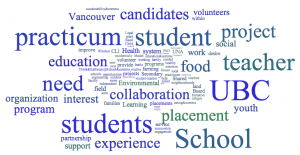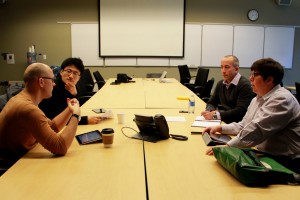A university builds upon its scholars but sparkles with the interactions among them. In addition to the formal institutions of faculties and departments, researchers are more fluidly connected via other channels, such as co-teaching a course, co-authoring a paper or co-brainstorming an idea.  Do administrative boundaries of faculties and departments respect the more organic ways in which researchers interact? What is more, universities interact beyond the confines of the institutions with a number of external partners ranging widely from public institutions, to private firms and non-profit organizations. What are these interactions and what fields do they cover?
Do administrative boundaries of faculties and departments respect the more organic ways in which researchers interact? What is more, universities interact beyond the confines of the institutions with a number of external partners ranging widely from public institutions, to private firms and non-profit organizations. What are these interactions and what fields do they cover?
More often than not scholars are organized by a hierarchy of faculties and departments. But people interact with each other much more fluidly via research and teaching collaboration beyond departmental boundaries. These relationships are rarely reflected on an organizational chart but they can visualize how knowledge is created and sustained.
This campus-wide project aimed to survey existing linkages in our research and teaching enterprise, identify cohesive sub-communities based on people’s intellectual interactions, and visualize the knowledge network at UBC. I designed a survey that asked the UBC community and those connected to identify up to seven of their collaborators during the last 10 years and describe how they were initiated, the length and depth of the interactions, their geographic vicinity, and respective expertise. These collaborations intended to capture both inside and outside networks (academia, communities, industries, governments or NGOs).

Top Left to Right Jinhua Zhao (CIVIL / SCARP); Simon Neame (Director IKBL); Jan Lüdert (Knowledge Map Researcher); Susan Grossmann (Director, Centre for Community Engaged Learning)
For this research, I drew on social network analysis methods to develop an online survey with the goal to identify the intellectual interactions and instructors at UBC, characterize their extensity and intensity, and map the Collaborative Knowledge Network (CKN). Using the CKN, I dentified cohesive sub-communities at UBC and beyond based on researchers’ intellectual collaboration and compared them to the administrative boundaries. The key data source was a short online questionnaire survey among UBC researchers and existing external collaborators. To our best knowledge, this study was the first attempt to partition a large-scale, complex and multi-disciplinary research institute based on researchers’ intellectual interactions. The comparison between this partition results and the formal administrative structure revealed the (in) consistency between the two distinct modes of researcher interactions and recommended ways in which the administrative structure can be fine-tuned to better facilitate the interactions among researchers and the wider community.
Resources
Knowledge Map Website
Redrawing UBC: Research maps knowledge Article by Brian Lin
Knowledge Map Prezi by Jan Lüdert
Knowledge Map PPT
Knowledge_Map_Survey_Report
*The UBC Knowledge Map is a joint project by UBC’s Community and Learning Initiative (CLI); Irvine K. Barber Learning Centre and the School of Community and Reginal Planning (SCARP)
